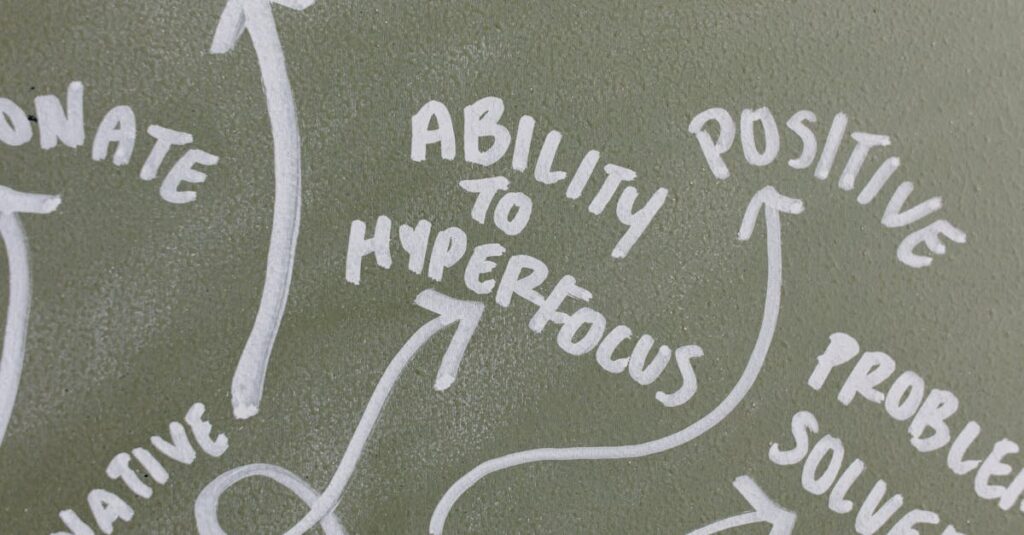High school isn’t just about academics; it’s a crucial time for personal development and discovering leadership potential. Taking on leadership positions can shape a student’s character and influence their future. Whether it’s being a class president, a club leader, or a team captain, these roles provide invaluable experiences that foster skills like communication, teamwork, and problem-solving.
I’ve seen firsthand how stepping into a leadership role can boost confidence and create a sense of responsibility. These positions not only enhance a student’s resume but also prepare them for challenges ahead, both in college and in their careers. Let’s explore the various leadership opportunities available in high school and how they can make a lasting impact on students’ lives.
Leadership Positions in High School
- Personal Growth: Leadership positions in high school significantly contribute to personal development by enhancing students’ confidence, critical thinking, and resilience.
- Skill Enhancement: Students develop essential skills such as communication, teamwork, and problem-solving through various leadership roles, preparing them for future challenges in academics and careers.

- Community Impact: Engaging in leadership roles empowers students to positively influence their school and local communities by initiating programs and fostering a collaborative environment.
- Diverse Opportunities: High school offers various leadership positions—such as class president, club leader, and team captain—that cater to different interests and provide unique experiences.
- Critical Challenges: Student leaders face challenges like time management and balancing academics with leadership duties, which require strategic planning and adaptability to overcome.
- Future Preparedness: The experiences gained from these leadership roles not only enhance resumes but also equip students with the skills needed for success in college and beyond.
Overview Of Leadership Positions In High School
Leadership positions in high school provide various opportunities for students to develop crucial skills. These roles, including class president, club leaders, and team captains, allow students to engage with their peers while working on projects and initiatives that can improve their school environment.
- Class President: Class presidents represent their class within student government. They organize events, advocate for their class’s needs, and coordinate with faculty and administration.
- Club Leaders: Club leaders manage extracurricular organizations. They plan activities, recruit members, and facilitate meetings while fostering a sense of community among participants.
- Team Captains: Team captains guide sports teams, motivating teammates and strategizing for games. Their leadership cultivates team cohesion and reinforces discipline.
- Student Council Members: Student council members work collectively to address school-wide issues. They encourage student involvement and serve as a bridge between the student body and administration.
- Peer Mentors: Peer mentors assist younger students with academic and social challenges. They provide guidance, promote inclusivity, and foster a supportive school culture.
- Event Coordinators: Event coordinators organize major school events like dances or fundraisers. They handle logistics, manage budgets, and collaborate with staff and volunteers.
These leadership positions not only empower students but also offer invaluable experiences that prepare them for future challenges. Each role contributes to personal growth, enhancing skills in communication, organization, and critical thinking, which are essential in both college and career settings.
Importance Of Leadership Positions
Leadership positions in high school play a crucial role in shaping students’ futures, providing them with the chance to grow personally and positively impact their communities. Engaging in these roles enhances various skills that are vital for success.
Personal Development
Leadership roles enhance personal development by fostering confidence, independence, and critical thinking. Students learn to set and achieve goals through responsibilities like planning events or leading teams. Team captains, for example, navigate challenges that improve their decision-making abilities. Class presidents practice public speaking and advocacy, skills useful in academic and career settings. These roles also encourage resilience, as students face obstacles and learn to adapt.
Community Impact
Leadership positions allow students to make meaningful contributions to their school and local communities. Students in these roles often initiate programs that address specific needs, such as peer mentoring or environmental sustainability projects. While serving as event coordinators, they bring together school spirit and community collaboration through activities like fundraisers or cultural fairs. This engagement creates a sense of belonging and strengthens relationships among peers, teachers, and families. Ultimately, these experiences foster a culture of support and cooperation within the school environment.
Types Of Leadership Positions
Leadership positions in high school vary significantly, offering students numerous avenues to develop their skills and influence their peers. Here’s a closer look at some key types of leadership roles available.
Student Government
Student government positions, such as class president or treasurer, allow students to represent their peers in decision-making processes. I often see students in these roles advocating for issues that matter to their classmates. They organize events, facilitate communication between faculty and students, and promote school spirit. Responsibilities include planning activities, managing budgets, and ensuring that the student body’s voice is heard in school policy discussions. These experiences build leadership skills, enhance public speaking abilities, and encourage accountability.
Club Leadership
Club leadership positions present opportunities for students to manage extracurricular activities. I’ve observed club leaders coordinating events, overseeing meetings, and fostering a sense of community among members. They take charge of specific interests, such as debate, art, or environmental awareness. Managing a club involves setting goals, delegating tasks, and engaging members in projects. This role strengthens organizational skills and encourages teamwork and creativity, allowing students to explore their passions while developing important leadership qualities.
Athletic Leadership
Athletic leadership positions, such as team captains or managers, involve guiding fellow athletes both on and off the field. I notice that team captains motivate their teammates, lead practices, and represent the team at school events. This role promotes discipline, resilience, and collaboration. Team captains are often responsible for fostering an inclusive environment, setting performance goals, and mentoring less experienced athletes. Such engagement in sports helps build confidence and serves as a foundation for future leadership opportunities in both academic and professional settings.
Skills Developed Through Leadership Roles
Leadership roles in high school significantly enhance various skills crucial for personal and professional success. Engaging in positions such as class president or team captain cultivates valuable abilities, including communication and teamwork.
Communication Skills
Effective communication skills are vital for leaders. Whether delivering speeches, writing announcements, or engaging peers in discussions, leadership positions provide ample opportunities to practice and refine these skills. I noticed that presenting ideas clearly fosters understanding and encourages participation, significantly impacting group dynamics. Leaders learn to adapt their communication styles, ensuring messages resonate with diverse audiences. They also gain experience in active listening, which enhances their ability to address concerns and build trust within their teams.
Teamwork and Collaboration
Teamwork stands at the core of successful leadership. Students in leadership roles learn to collaborate with others to achieve common goals. As a club leader, I collaborated with fellow members to plan events, fostering a sense of unity and shared responsibility. I realized that effective leaders promote an inclusive environment where everyone’s contributions are valued. They also develop conflict resolution skills, necessary for addressing disagreements or differing opinions, ensuring team cohesion remains intact. By participating in group projects or team activities, leaders strengthen their ability to work cooperatively, paving the way for future collaboration in college and careers.
Challenges Faced By Student Leaders
Student leaders encounter diverse challenges that require resilience and adaptability. These obstacles can significantly impact their performance and overall experience in leadership roles.
Time Management
Time management poses a significant challenge for student leaders. Leaders face numerous responsibilities, from organizing events to attending meetings, all while maintaining their academic commitments. Prioritizing tasks and setting deadlines helps students efficiently allocate their time. Implementing tools like calendars or task lists assists in visualizing priorities and managing schedules. Allocating specific time blocks for academic work, leadership duties, and personal time can also enhance productivity and reduce stress.
Balancing Academics and Leadership
 Balancing academics and leadership often proves demanding. Juggling study hours with planning meetings or leading extracurricular activities requires strategic planning. Student leaders can create a weekly schedule that includes blocks for coursework and leadership duties. Establishing realistic academic goals helps ensure that leadership roles do not overshadow school performance. Additionally, seeking support from teachers or peers allows student leaders to navigate both areas effectively, maintaining performance standards in academics while fulfilling leadership responsibilities.
Balancing academics and leadership often proves demanding. Juggling study hours with planning meetings or leading extracurricular activities requires strategic planning. Student leaders can create a weekly schedule that includes blocks for coursework and leadership duties. Establishing realistic academic goals helps ensure that leadership roles do not overshadow school performance. Additionally, seeking support from teachers or peers allows student leaders to navigate both areas effectively, maintaining performance standards in academics while fulfilling leadership responsibilities.
Personal and Professional Journey
Embracing leadership positions in high school is a transformative experience. It’s not just about holding a title; it’s about the growth that comes from stepping up and taking responsibility. The skills I’ve developed through these roles have been invaluable.
Whether it’s learning to communicate effectively or mastering the art of teamwork, each experience has shaped who I am today. I’ve seen firsthand how these opportunities can foster confidence and resilience, preparing me for future challenges.
So if you’re considering a leadership role, I encourage you to take the leap. The benefits extend far beyond high school and can have a lasting impact on your personal and professional journey.

